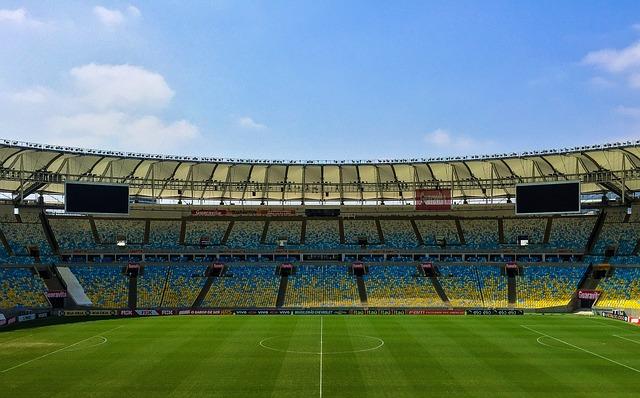In the ever-evolving landscape of global football, discussions about the relative toughness of leagues often spark intense debate among players and fans alike. Recently, Zimbabwean midfielder Marshall Munetsi made headlines with his bold assertion that African football presents a greater challenge than its European counterparts. Speaking with the press, Munetsi, who currently competes in France’s Ligue 1, highlighted the unique physicality and competitiveness of the game on the African continent. His remarks not only shed light on the distinct style of play prevalent in Africa but also invite a closer examination of the cultural and infrastructural factors that shape the continent’s footballing landscape. As African players continue to make their mark in Europe, Munetsi’s claims resonate with broader themes about identity, resilience, and the untapped potential of African football on the global stage.
African Football’s Unique Challenges compared to European Leagues
African football operates under a set of unique challenges that significantly differentiate it from its European counterparts. One of the most pressing issues is the infrastructure disparity. Many stadiums and training facilities in Africa are underdeveloped compared to the state-of-the-art facilities found in Europe. This not only affects the quality of play but also limits players’ development opportunities. Additionally, the financial constraints faced by clubs in Africa can be stark; many teams struggle to secure sponsorship and funding, resulting in limited resources for scouting, training, and player retention.
Moreover, administrative hurdles and inconsistent governance are prevalent within African football. The absence of unified regulations often leads to periods of uncertainty, affecting league competitiveness and club operations. Other factors include a challenging travel schedule due to vast distances and inadequate transport networks, which can lead to player fatigue and impact performance. Environmental challenges such as extreme weather conditions also play a role, influencing match conditions and player health. These combined obstacles create a playing field where resilience and adaptability are essential for success.
Insights from Munetsi on the Physicality of the African Game
Zimbabwean midfielder Munetsi has sparked a provocative debate about the nature of football on the African continent compared to its European counterpart. He argues that the African game showcases a level of physicality that is often underestimated, emphasizing that players must not only master technical skills but also navigate intensely challenging physical confrontations. Munetsi points to various factors that contribute to this robust playing style:
- High Competition Levels: Players are pushed to their limits in local leagues,resulting in a more aggressive approach to gameplay.
- Cultural Emphasis on Resilience: The emphasis on toughness in African football can be traced back to cultural norms that valorize strength and perseverance.
- Adaptation to Harsh Conditions: Players often must adapt to varying field conditions and climates, further enhancing their physical approach.
As evidence of his claims, Munetsi points out that many African players have successfully adapted to European leagues, often bringing their robust styles with them. This transfer of skills leads to a unique blend of physical attributes and strategic gameplay uncommon in Europe. To illustrate the contrast, consider the following table comparing African and European game characteristics:
| Characteristic | African Game | European Game |
|---|---|---|
| Physicality | Highly aggressive, strength-focused | Technical finesse, speed-oriented |
| Player Development | Emerging talent in local leagues | Structured youth academies |
| Game Pace | Variable, influenced by external conditions | Consistent, controlled pace |
The Role of Infrastructure in Shaping Player Development in Africa
The development of football talent in Africa is heavily influenced by the quality and availability of infrastructure.From training facilities to local leagues, the way these components are structured significantly impacts young players’ growth. High-quality pitches, adequate training materials, and coaching education are essential elements that create an habitat where talent can flourish. When these resources are lacking,aspiring footballers face numerous challenges that can inhibit their progress.Additionally, the establishment of youth academies often hinges on the availability of infrastructure, allowing for structured player development that can elevate the continent’s football standard.
Moreover, the investment in infrastructure goes beyond just physical facilities. Access to modern technology and data analytics can provide players with insights that refine their skills and enhance their tactical understanding of the game. Communities that foster a culture of football, supported by infrastructure like community fields and training grants, can greatly uplift local talent. This is vital as it enables young players in less affluent areas to compete on an equal footing with their peers in more developed leagues, ultimately contributing to a more robust and competitive football landscape across Africa.
Cultural Factors Influencing Competitive spirit in African Football
A thorough examination of cultural factors reveals a deep and complex background that shapes the competitive spirit in African football. Key elements include:
- Community pride: The sense of belonging and representation fuels fiercer rivalries and encourages players to perform at their peak, aiming to uplift their communities.
- Historical Context: The legacy of colonialism and subsequent struggles for identity intertwine with the game, making victories on the pitch not just personal achievements but cultural triumphs.
- Passion and Resilience: Players often come from challenging environments, and this backdrop instills a fighting spirit that translates into their gameplay, confronting opponents with unwavering determination.
Furthermore, the influence of family and local traditions plays a crucial role in shaping a player’s mentality. Many young athletes are encouraged to pursue football not only as a career but as a means of achieving a better life for their families. This has resulted in:
- High Expectations: Players frequently enough bear the weight of their family’s aspirations, motivating them to strive for success beyond personal glory.
- Collective Support: Local communities rally behind their teams, creating an atmosphere of solidarity that enhances the players’ resolve and competitive edge.
Recommendations for Elevating African Football on the Global Stage
To enhance the visibility and competitiveness of African football on a global scale,a multi-faceted approach is essential. Key recommendations include:
- Investment in Grassroots Programs: Fostering talent from a young age through academies and community leagues can create a pipeline of skilled players.
- Infrastructure Development: Upgrading stadiums, training grounds, and facilities to meet international standards is critical for attracting global attention and hosting major tournaments.
- Collaboration with European Clubs: Building partnerships that allow for player exchanges, coaching clinics, and shared expertise can elevate the competitiveness of African teams.
- Enhanced marketing Strategies: Promoting African leagues and competitions through digital platforms and engaging narratives can draw in a wider audience.
Moreover, addressing systemic challenges within the sport is crucial for sustainable growth. Initiatives should include:
- Strengthening Governance: Establishing clear management structures in football organizations can enhance credibility and improve operations.
- Encouraging Women’s Football: Investing in and promoting women’s leagues can increase participation and diversity in the sport.
- Leveraging Technology: Utilizing data analytics and advanced training methods can help teams improve performance and attract international scouts.
Closing Remarks
marshall Munetsi’s assertion that African football presents a more formidable challenge than its European counterpart sheds light on the inherent complexities and unique dynamics of the sport on the continent. His insights not only provoke a reevaluation of perceptions surrounding African football but also highlight the resilience and skill of players who navigate demanding conditions both on and off the pitch. As the football community continues to evolve, understanding these differences is crucial for fostering growth and gratitude for the talent emerging from Africa. With figures like Munetsi leading the conversation, the future of African football promises to be both competitive and compelling, urging fans and analysts alike to recognize the richness of the game beyond geographical boundaries.

